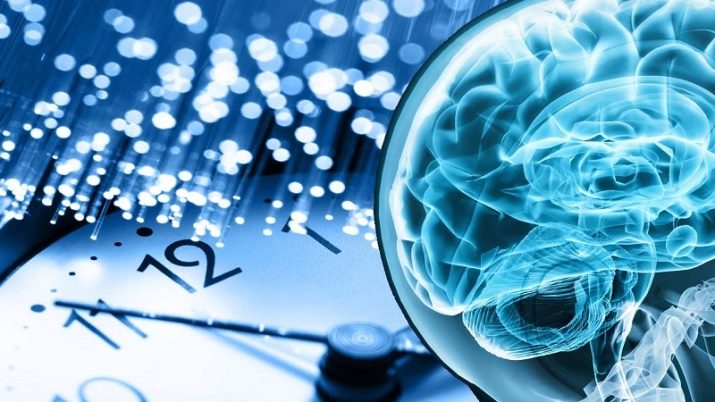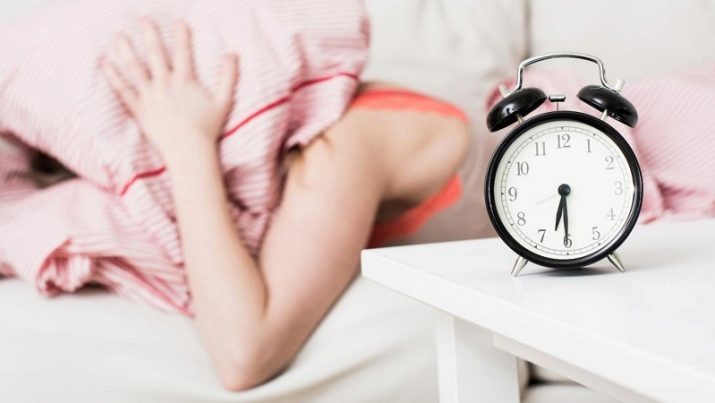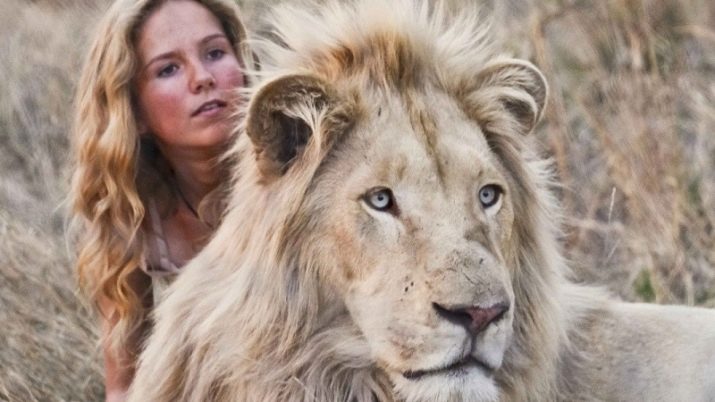Chronotype: what is it and how to define it?

Each of us has our own daily rhythms. They are determined by chronotypes. If you clearly define your own chronotype, you can choose interesting working conditions, build your life and activities so that they are as efficient as possible, and energy costs for them are minimal. This article will tell you how to establish your chronotype, what they are.

What it is?
The name "chronotype" comes from the Greek "chronos", which means "time". This is an individual regime of the daily rhythm of a person or an animal. This concept is used when it is necessary to describe the possibilities of adaptation and functioning of the organism. The most popular and widely known chronotypes are "owls", "larks" and "pigeons", each of these species has its own characteristics that we need to know in order to determine our own belonging to a particular species. Three chronotypes - amateur classification. Researchers identify up to seven types and consider detailed detailing to be more informative.
For the first time the theory of chronotypes was put forward by the famous neurophysiologist Kleitman in 1939, but only three decades later, the Swedish psychologist Oqvist compiled the first questionnaire that helps to one degree or another to classify a person as belonging to a certain chronotype. At that stage of the development of science, only three chronotypes were used. People with morning activity, getting up early, productive in the morning, were called "larks." Those who were active in the evenings, who did not accept early wakes, were called "owls", and the intermediate indifferent version was referred to as "pigeons".
Later, the questionnaire was finalized by the German chronobiologist Til Renneberg. From under his pen came the famous "Munich test", which makes it possible to assess not only internal biorhythms, but also the external influence of certain factors on a person. The test divides people into seven chronotypes.
Thiel also noted that the chronotype is given from birth, and not acquired in the course of life, and therefore to blame the "owl" for being lazy and cannot get up early is at least stupid, because it's not a person's whims, but his genetics ...

Scientists were also able to prove and substantiate why it is important to follow the innate chronotype, because "violence against oneself", attempts to live differently from the way the internal biological clock dictates, and the way someone needs it from the outside, can have very disastrous consequences for health and quality of human life. In scientific laboratories, the features of chronotypes are studied not only in humans. Individual individuals with different characteristics of the internal "clock" have already been found among animals and even among insects. Thus, among the fruit flies, biologists have clearly identified groups of "early" and "late" individuals.
Very often you can hear talk that a person considers himself to be "larks" or "owls". In fact, in the population, the division is not at all like that. More than half of the people are "pigeons", scientists are sure, and only 20% each is assigned to the share of "owls" and early-rising "larks". And in order to detail the data, more characteristic descriptions are used, for example, adding a degree to the name:
- expressed type;
- weakly expressed;
- intermediate;
- weak type;
- pronounced evening.
There is a theory that humanity was divided into "owls" and "larks" in the process of evolution. It was a necessity that made the survival of the species possible. In a world full of dangers, some people had to sleep at night to hunt during the day, while others slept during the day to keep the tribe in peace at night.

Description of biorhythms
The biological rhythms of a person depend on his chronotype. Scientists have named the approximate characteristics of the day of different representatives.
"Owls"
For a classic pronounced "owl" to get up before 8-10 am is very difficult, almost impossible. They go to bed after midnight, regardless of external factors, but even if something makes them go to bed earlier, nothing will force them to get up earlier. The peak of creative and mental activity of "owls" falls on the period after 4 pm, and therefore people with such a chronotype are ideally suited to work in the evenings, night shifts. The type is characterized by poor adaptability to changes. "Owls" adapt very poorly to the social environment.

"Larks"
This is the name given to people who get up early, they wake up without compulsion, easily and independently. For them, the daily routine is extremely important, since they are sensitive to any changes. The spontaneous awakening of the "lark" falls on the interval from 4 to 6 in the morning. And after 21 hours sleep is vital for them.
The peak of activity of these people falls in the morning hours, and therefore it is better to plan the most important tasks at this time, not leaving for the afternoon and evening.
"Doves"
Representatives of this largest group wake up on their own, usually between 6-8 o'clock in the morning. That they need to sleep, "pigeons" begin to feel in the interval between 22 hours and midnight, and they also experience a craving for sleep and rest at lunchtime. Pigeons are easily given a flexible regime, in which they can plan important tasks both in the morning and in the afternoon, they are quite effective in the evenings, but no later than 17 hours. This type is considered the most adaptable to modern conditions and social environment.
All types are characterized by circadian rhythms caused by hormonal secretion. "Owls" and "larks" differ in the levels of serotonin and melatonin in the blood. In the first hour after waking up, "larks" show a higher level of cortisol in the blood.This hormone in all chronotypes decreases in the middle of sleep, and then begins to increase. It's just that this process is going faster for the "lark", and therefore by their 5 am they are already cheerful, cheerful and ready for creative achievements, and the "owls" are still in the stage of accumulating cortisol for awakening. But early risers begin to accumulate melatonin earlier than others, and therefore feel the need to go to bed earlier.

Breus types
One of the most prominent figures in chronobiology is Dr. Breus. Michael Breus is a sleep specialist. He went beyond the study of sleep and developed several chronotypes of his own, recommending that they perform certain actions at certain times in order to achieve high productivity and well-being.
"Wolves"
Breus calls people with a similar chronotype impulsive and even capricious in places, they tend to change their moods, more often fall into pessimism. But essentially "Wolves" do not know fears, they are more often looking for new sharp impressions. In the morning after waking up, they usually do not want to eat, limiting themselves to only a couple of cups of coffee. But in the evening they experience a truly "wolfish appetite" and are ready to eat so much that nutritionists can only be horrified.
"Wolves" Breus recommends going to bed no later than midnight, exclude daytime "siesta" with lunchtime sleep. They should schedule important things for lunchtime and evening, and the doctor recommends doing sports after 7 in the morning or at noon, freeing the evening from workouts.

"Dolphins"
Representatives of this type are distinguished by increased nervousness, they are often closed, unsociable. They do not like to take risks, participate in adventures, the smallest details in any process or business are important to them. Dolphins often suffer from perfectionism. It is difficult for them to get up in the morning, they rarely experience a feeling of relief after sleep, the feeling that they have managed to fully rest. The feeling of cheerfulness comes gradually, as the clock hands approach the evening period. Dolphins often complain of insomnia.
Michael Breus recommended that they go to bed at 11 pm and wake up at 6.30 am. It is better to plan all important things for the "dolphins" at 16:00, sports - after 17:00.
"Lions"
People of this chronotype are responsible, balanced, they stand firmly on their feet and confidently walk through life. They are energetic, get up early, easily take on any accomplishments, but quickly "fizzle out", get tired, and need to go to bed earlier.
Breus advises them to go to bed early (before 10 pm) and get up early - before 6 in the morning. The doctor advises to schedule sports and physical activity at 17:00, and to do important things to conquer the world from 7 to 11 in the morning.

"The Bears"
Representatives of this group, according to Breus, are cautious and friendly. They usually try to monitor their health. It is difficult for them to wake up, their sleep is deep and strong. Almost all "bears" believe that they do not sleep enough. The most active "bears" become in the afternoon.
Dr. Breus recommends that the "bears" go to bed around 23:00, get up around 9 in the morning. With such a dream, the peak of their business activity and working capacity will fall at 15:00 and will remain at a fairly high level until 23:00. If the "bear" goes in for sports, workouts should be scheduled for 18 hours, not earlier.
How to determine your chronotype?
Determining your own chronotype is possible, and without much difficulty. The most popular way to find out which type you are is Horn-Ostberg questionnaire. Finding her and taking the test is not difficult.
There is a Breus test, its classification was mentioned above. There are also methods for body temperature and pulse rate at different times of the day. The method is called the Hildelbrandt index.
There are also a large number of online questionnaires on the Internet that will help determine the chronotype for free.

Can you change?
With age, chronotypes may change slightly. If children for the most part are pronounced or moderate "larks", then as they grow up, the mass proportion of "owls" begins to increase among them. And by the age of 21 in men and by the age of 19 in women, the chronotype is usually clearly defined. When an adult begins to grow old, over time, the opposite tendency is outlined - to earlier waking up, less sleep time. But here men are different. Many people manage to preserve the "owl" style of biorhythms to a ripe old age.
Some researchers claim that it is possible to rebuild the biological clock for an early rise, to stop being an "owl" through long training. But these claims have not yet found a compelling justification, and such an attempt could be dangerous to health.
Interesting Facts
The modern structure of society and the requirements for its members are more suitable for "larks" and "doves", and therefore they usually feel better, have better health than "owls". But one biorhythm failure, for example, a forced lack of sleep at night, a flight, a change in time zone - and there is a significant failure of many indicators. Therefore, it is more difficult for a "lark" or "dove" to adapt to such changes. "Birds" can get depressed, and this probability is always several times higher in "pigeons".
It is difficult for "owls" to live and work in the morning. Neither coffee, nor tonics, nor exercise will increase performance. But this chronotype also has its own advantages. Scientists have found that "owls" better perceive disruptions in the daily routine, more easily adapt to moving and show higher health indicators in old age.
Among children, studies have shown different findings. Owl teenagers are more inclined to behave violently and deviantly, they are more prone to bouts of depression, they are quite aggressive. Owl students learn worse. Marriages in which partners are of different types are more likely to break up.
Chronobiology is full of secrets, scientists have not revealed all the secrets, and research is still underway.









